Decoding the Meaning of the Fairy Tail Symbol
The Fairy Tail symbol, crafted by Hiro Mashima, encapsulates the guild's intrinsic values of camaraderie, loyalty, and shared aspirations. Its fluid, dynamic lines and bold contours create a visually impactful emblem that balances harmony and complexity.
This stylized fairy motif is not only a mark of identity but also drives character development and narrative depth by symbolizing commitment and transformation. As a rite of passage for guild members, its placement underscores personal values and connection to the guild.
Moreover, fan interpretations enrich its meaning, viewing the symbol as a beacon of unity and aspiration. To explore its deeper cultural and narrative significance, additional insights await.

Key Takeaways
- Represents the guild's values of brotherhood, camaraderie, and shared aspirations.
- Symbolizes trust, loyalty, and mutual understanding among guild members.
- Acts as a visual emblem of commitment, acceptance, and transformation within the guild.
- Embodies hope, inspiration, and the unique bond with celestial spirits.
- Enhances the narrative by fostering character development and emotional resonance.
Origin of the Fairy Tail Symbol

The Fairy Tail symbol, an iconic emblem within the world of anime and manga, originated from the creative vision of Hiro Mashima, the series' author and illustrator. The symbol represents the eponymous guild within the narrative, encapsulating its values and identity.
Mashima's creation of the symbol was deeply intertwined with his thematic exploration of camaraderie, adventure, and the spirit of resistance. The emblem not only serves as a visual identifier but also as a narrative device, binding characters and their stories under a unified banner.
Design Elements Explained
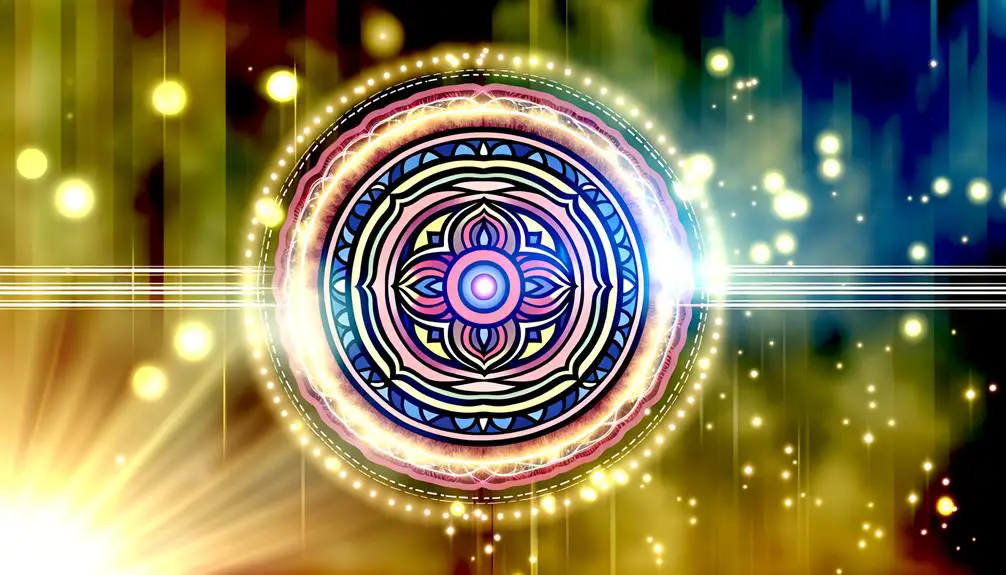
Hiro Mashima's meticulous design of the Fairy Tail symbol incorporates distinct elements that each contribute to its deeper meaning and visual impact. The emblem is characterized by its fluid, dynamic lines and bold outlines, which evoke a sense of motion and energy. The central motif, often interpreted as a stylized fairy, harmonizes with the guild's ethos of freedom and adventure. The interplay of curves and angles within the design creates a balanced yet intricate visual structure.
| Design Element | Description | Significance |
|---|---|---|
| Lines | Fluid, dynamic | Evokes motion and energy |
| Motif | Stylized fairy | Represents freedom and adventure |
| Contours | Bold | Enhances visual impact |
| Curves | Harmonious | Symbolizes balance |
| Angles | Contrasting | Adds complexity |
These elements collectively enhance the symbol's aesthetic and conceptual resonance.
Symbolism in Guild Culture
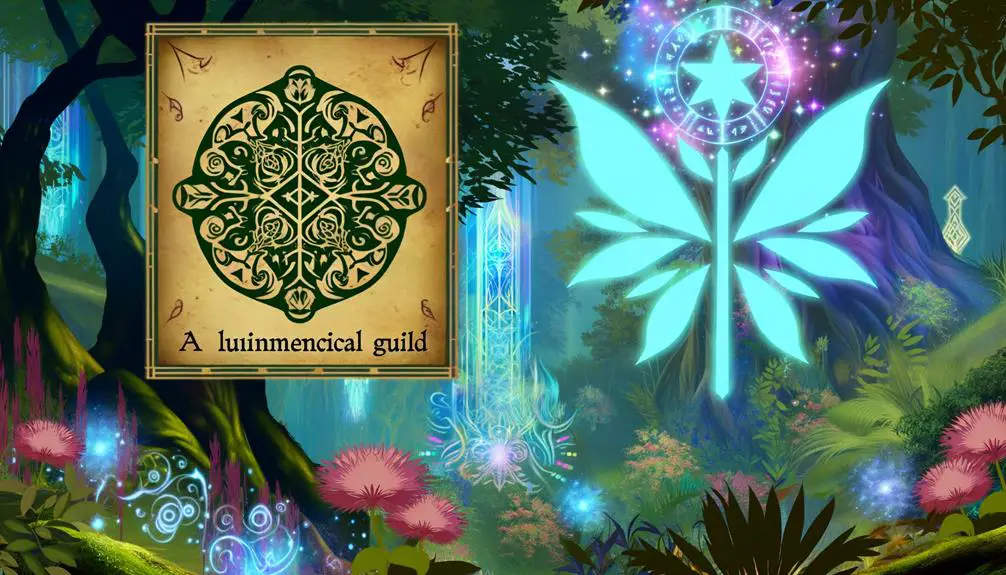
In the context of guild culture, the Fairy Tail symbol serves as a profound representation of brotherhood and camaraderie, encapsulating the bonds that unite its members.
This emblem also underscores the principles of trust and loyalty, fundamental values that foster a secure and supportive community.
Additionally, it reflects shared aspirations, embodying the collective goals and dreams that drive the guild forward.
Brotherhood and Camaraderie
Brotherhood and camaraderie within the Fairy Tail guild are emblematic of the organization's deep-rooted values of mutual support and loyalty, which are vividly symbolized through their shared emblem and collective rituals. The emblem serves as a constant reminder of their unity and interdependence, fostering a sense of belonging among members. This emblematic representation extends to their rituals, where shared experiences and collective challenges fortify these bonds.
| Aspect | Symbolism | Impact |
|---|---|---|
| Emblem | Unity and Identity | Strengthens group cohesion |
| Rituals | Shared Experiences | Enhances mutual understanding |
| Collective Challenges | Interdependence | Builds resilience and solidarity |
| Guild Culture | Brotherhood and Camaraderie | Promotes mutual support |
These elements collectively create a robust guild culture defined by strong interpersonal connections.
Trust and Loyalty
Trust and loyalty within the Fairy Tail guild are symbolically represented through the guild's emblem and rituals, which serve to reinforce the foundational values of mutual respect and unwavering commitment among its members. The emblem, prominently displayed on each member, acts as a constant reminder of their collective identity and shared responsibilities.
Key elements include:
- Ritualistic Ceremonies: Initiation rites and guild meetings that underscore the importance of trust and loyalty.
- Symbolic Gestures: Acts such as sharing personal stories or sacrifices made to aid fellow members, emphasizing mutual respect.
- Conflict Resolution: Structured approaches to resolve internal disputes, ensuring that loyalty and trust remain intact.
These practices cultivate a profound sense of belonging and fidelity, essential for the guild's cohesion.
Shared Aspirations
Anchored in a deep sense of unity, the shared aspirations within the Fairy Tail guild are vividly encapsulated through the emblematic culture that fosters collective goals and dreams.
The guild's emblem is not just a symbol but a tribute to the members' mutual commitment to each other's growth and success.
This shared ethos encourages individual members to pursue their personal ambitions while simultaneously contributing to the guild's overarching objectives.
Such a culture of interconnected aspirations fosters a supportive environment where each member's achievements are celebrated as collective victories.
Consequently, the emblem serves as a constant reminder of their unity, resilience, and the interwoven destinies that propel them toward common horizons, reinforcing the bond that defines Fairy Tail's unique identity.
Emblem's Role in Storylines
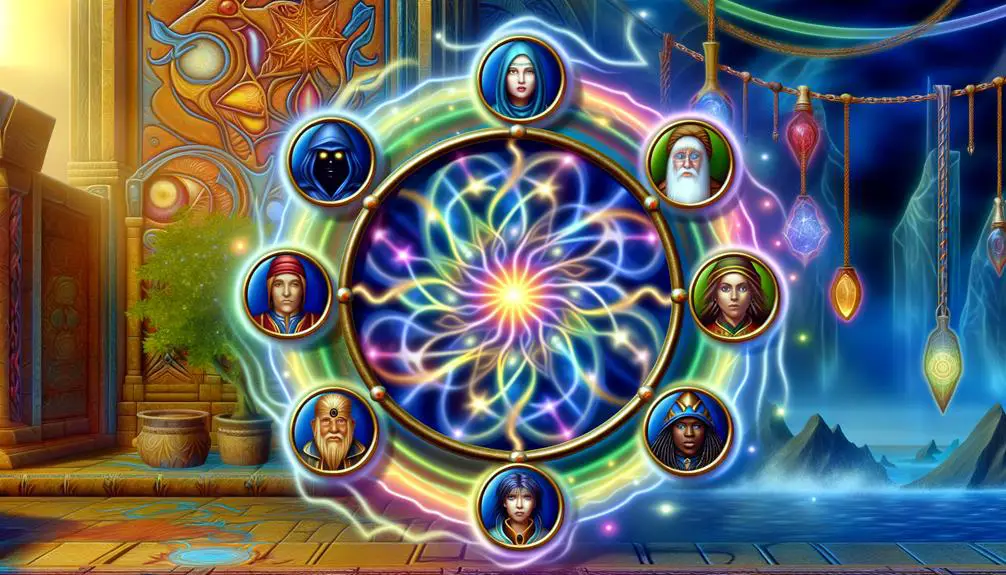
Throughout the narrative arcs of Fairy Tail, the emblem not only serves as a symbol of unity and identity but also plays an important role in driving character development and plot progression. The emblem's significance is multifaceted:
- Character Evolution: Characters often undergo personal growth or reveal hidden depths when they accept the guild emblem, symbolizing their commitment and transformation.
- Plot Catalysts: The emblem acts as a catalyst in various storylines, initiating quests and conflicts that propel the narrative forward.
- Emotional Resonance: The emblem fosters strong emotional bonds among members, enhancing the impact of pivotal scenes such as sacrifices, reunions, and battles.
In this way, the Fairy Tail emblem intertwines with the storyline, enriching both character arcs and plot dynamics.
Placement and Significance
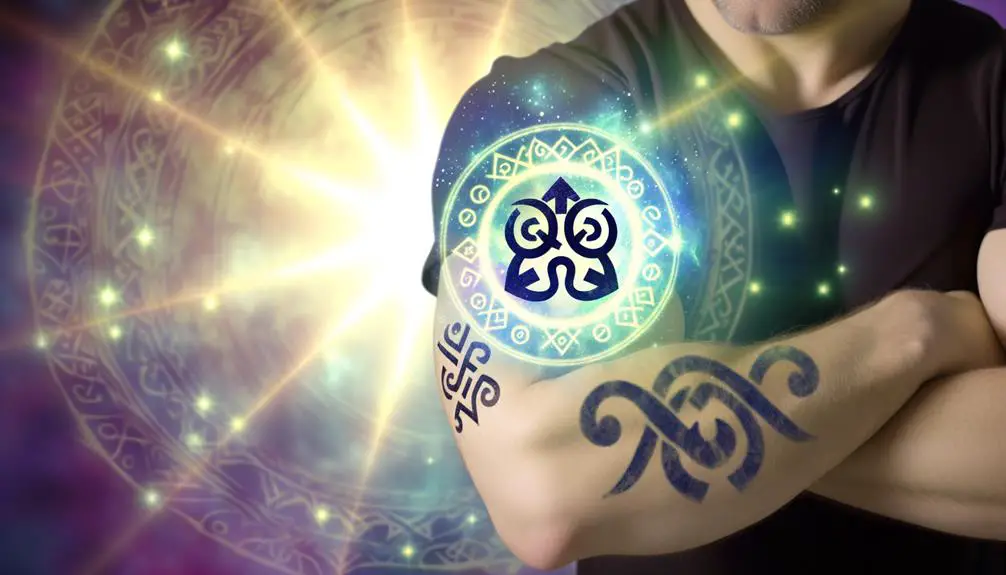
The placement of the Fairy Tail emblem on a character's body is not merely an aesthetic choice but a deliberate act imbued with significant personal and narrative meaning. Each placement reflects the individual's identity, values, and connection to the guild.
For instance, a prominently displayed emblem might signify pride and unwavering loyalty, while a more concealed placement could indicate a reserved nature or a complex relationship with the guild. Moreover, the process of choosing the emblem's location often symbolizes a rite of passage, marking the character's commitment and acceptance within the Fairy Tail family.
This nuanced symbolism enriches the storytelling by adding layers of personal significance and emotional depth to each character's journey.
Characters and Their Symbols
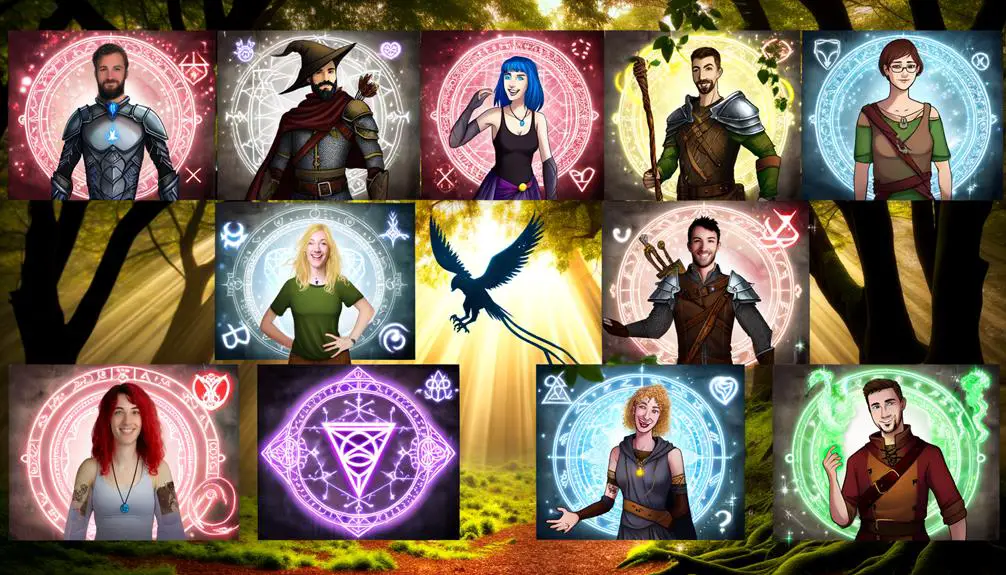
In examining the individual symbols associated with key characters in Fairy Tail, Natsu's Flame Emblem and Lucy's Celestial Key Symbol stand out prominently. Natsu's emblem represents his fiery spirit and Dragon Slayer magic, encapsulating his relentless determination and strength.
Conversely, Lucy's symbol signifies her bond with celestial spirits and highlights her role as a celestial wizard, emphasizing themes of connection and unity within the guild.
Natsu's Flame Emblem
Often symbolizing his unyielding spirit and fiery determination, Natsu's Flame Emblem serves as a profound representation of his character's core attributes and his connection to the overarching narrative of 'Fairy Tail.'
This emblem, prominently featured on Natsu's arm, encapsulates the essence of his persona and his role within the guild. The emblem is not merely decorative but imbued with significant meaning:
- Strength and Resilience: It reflects Natsu's incredible power and his ability to overcome insurmountable odds.
- Guild Loyalty: The emblem signifies his deep loyalty and commitment to the Fairy Tail guild, which he considers his family.
- Symbol of Hope: It embodies the hope and inspiration he provides to his comrades, often igniting their own will to fight.
Lucy's Celestial Key Symbol
Much like Natsu's Flame Insignia, Lucy's Celestial Key Emblem holds profound significance, representing her unique bond with celestial spirits and her pivotal role within the Fairy Tail guild.
This emblem, manifested as a collection of intricate keys, symbolizes her summoning abilities and her dedication to forging deep connections with her celestial spirits. Each key, corresponding to a specific spirit, highlights her commitment to the celestial arts and her strategic importance in battles.
The symbolism extends to her unwavering loyalty and strength, often drawing parallels to the guild's core values of camaraderie and resilience. Through this, Lucy's Celestial Key Emblem is not merely a tool but a portrayal of her character growth and integral presence in the Fairy Tail narrative.
Fan Interpretations
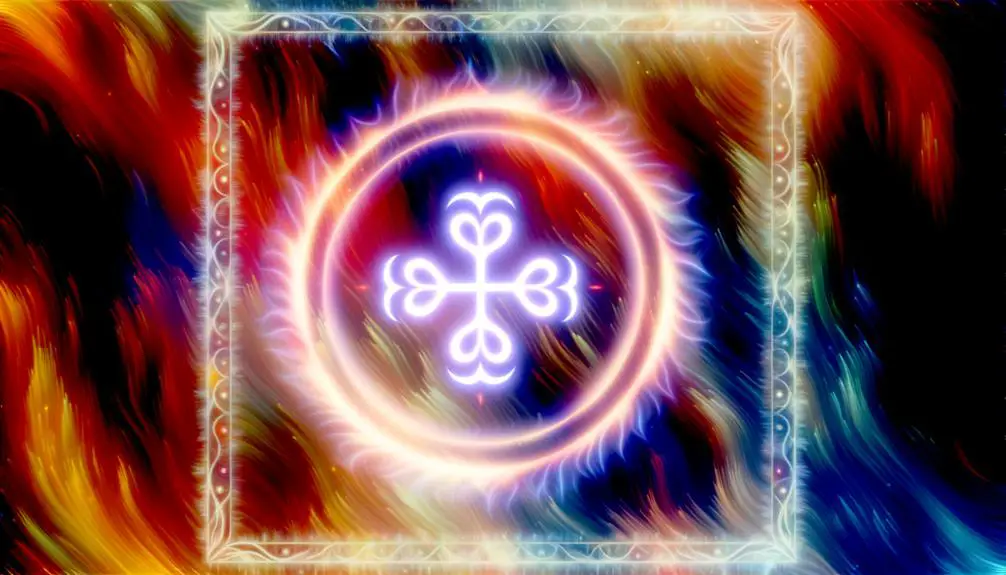
Frequently delving into the rich lore and symbolism of Fairy Tail, fans provide a myriad of interpretations that deepen the understanding of the guild's emblem within its narrative context. These interpretations often reflect the series' core themes of camaraderie and resilience.
- Symbol of Unity: Many fans view the emblem as a representation of the unbreakable bonds among guild members, signifying solidarity and mutual support.
- Emblem of Freedom: The symbol is also interpreted as a metaphor for the freedom to pursue one's dreams, echoing the guild's philosophy of nurturing individual growth.
- Mystical Representation: Some fans believe the emblem encapsulates the mystical elements of the series, aligning it with the magical and fantastical world inherent to Fairy Tail's storyline.
These interpretations enrich the narrative and foster a deeper connection with the series.
Symbol's Impact on Merchandise
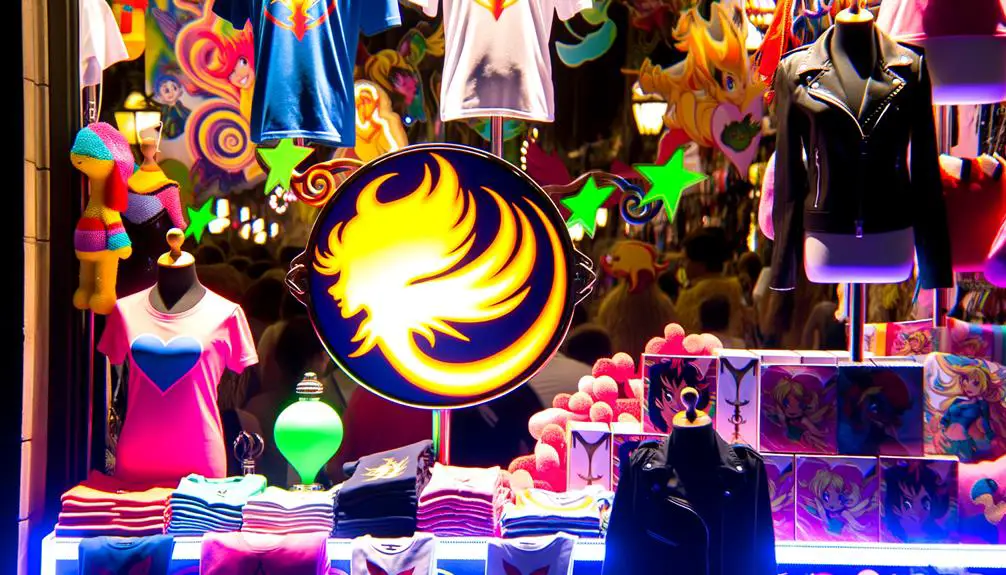
The integration of the Fairy Tail symbol into merchandise has greatly influenced consumer behavior, driving both the branding strategy and market appeal of related products. This emblem serves as a powerful identifier for fans, creating an emotional connection that transcends mere aesthetics. The symbol's presence on items such as apparel, accessories, and collectibles has not only fueled sales but also established a cohesive brand identity.
| Merchandise Category | Product Example | Consumer Appeal |
|---|---|---|
| Apparel | T-shirts, Hoodies | Everyday wear, fandom pride |
| Accessories | Keychains, Jewelry | Personalization, status |
| Collectibles | Action Figures, Posters | Nostalgia, display value |
| Stationery | Notebooks, Pens | Practicality, brand loyalty |
This strategic use of the Fairy Tail symbol amplifies brand loyalty and broadens market reach.
Evolution Over Time
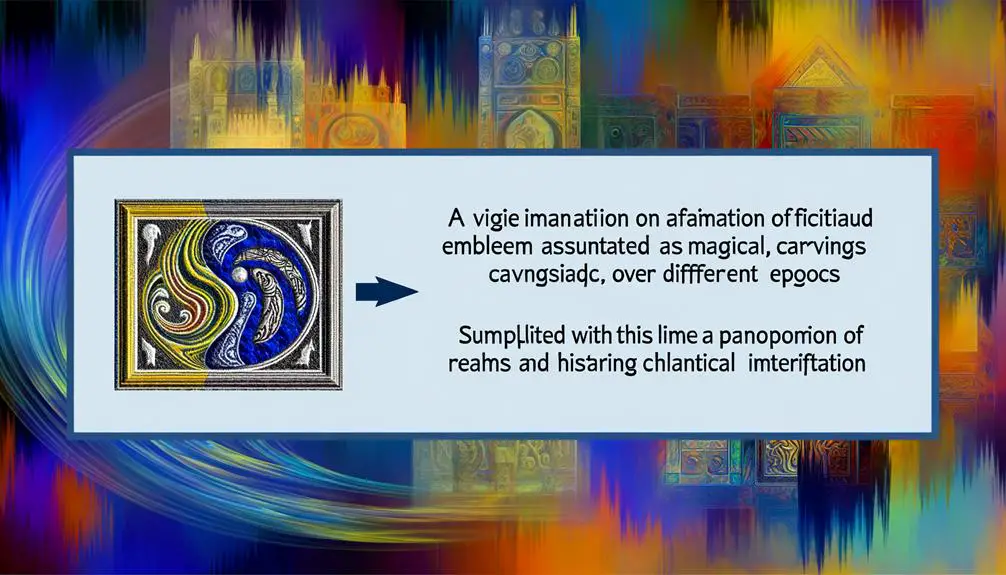
As the Fairy Tail symbol became a ubiquitous element in merchandise, its design and significance have undergone a fascinating evolution over time. Initially, the symbol represented the core values of the Fairy Tail guild, such as camaraderie and resilience.
Over the years, its design has subtly shifted, reflecting changes in animation style and thematic focus.
To understand its evolution, consider:
- Initial Design: Featured bold lines and a simplistic, recognizable shape to convey unity.
- Mid-Series Alterations: Introduced elaborate details and shading to reflect the narrative's complexity.
- Modern Adaptations: Incorporate digital enhancements and color variations, aligning with contemporary aesthetics.
These transformations not only signify artistic progression but also deepen the emblem's connection with its evolving audience.
Conclusion
The Fairy Tail symbol's evolution from its origin to its varied interpretations among fans exemplifies its integral role in the narrative and cultural fabric of the series. Through its design elements and symbolic significance within guild culture, the emblem serves as a linchpin in storylines and character development.
The symbol's placement and depiction underscore its importance, while its impact on merchandise highlights its pervasive influence. The emblem, thus, stands as a proof of the series' enduring legacy, proving that it is more than just a pretty face.






